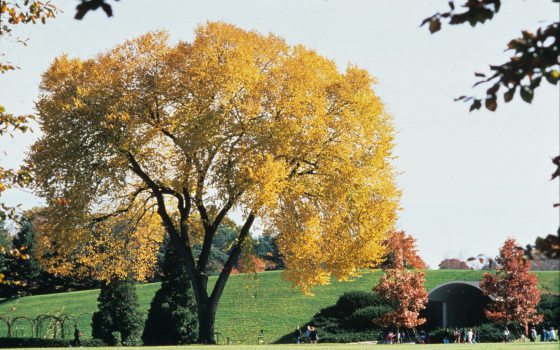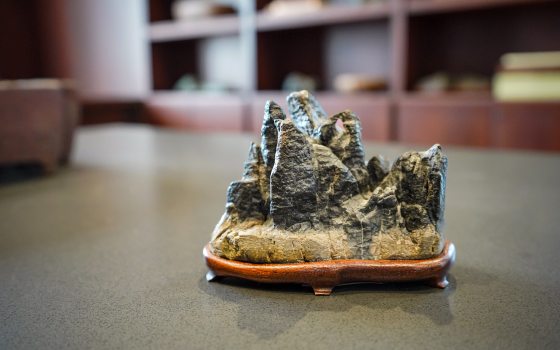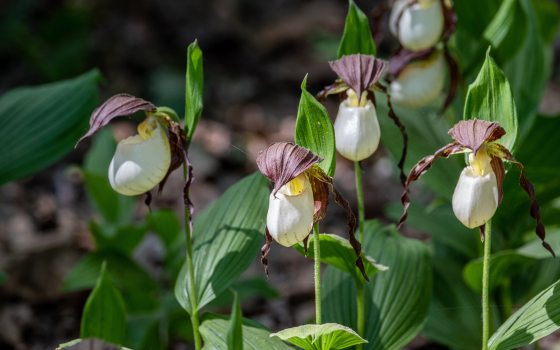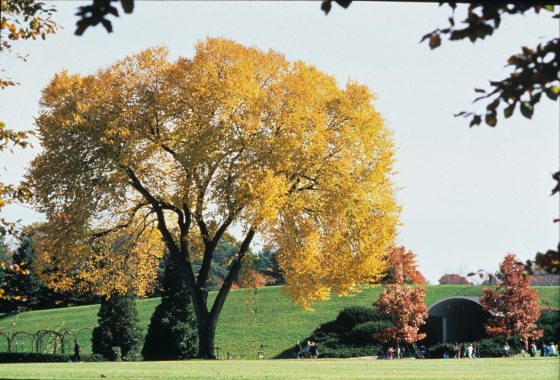
The American elm on the Cow Lot at Longwood Gardens, 1997. Photo by Larry Albee.
The American Elm was once a staple on the streets of America. Valued for its shade, beautiful branch structure, and its tough-as-nails reputation for growing just about anywhere it was planted, you could find this native tree ranging from Florida to some parts of southern Canada, and spreading as far west as North Dakota and Texas.
Municipalities thought they had found the perfect street tree until Dutch elm disease was introduced in the 1930s—allegedly from elm wood that was shipped from overseas. The disease spread throughout the country, destroying the beauty of urban streets that were once lined with American elms. Today, small groups of elm trees can still be found in the woods or on the side of the road, but it is rare to find large specimens along streets or in landscapes. The American elm on the Cow Lot at Longwood Gardens is the only straight species of American elm remaining in the Gardens. We believe the tree was planted in the early 1930s as a mature specimen by Lewis and Valentine Company, from the James Duke estate in Somerville, New Jersey. Standing just outside the Visitor Center, this tree provides a majestic welcome to our guests, and gives everyone a taste of what's to come as they begin their way through the Gardens.
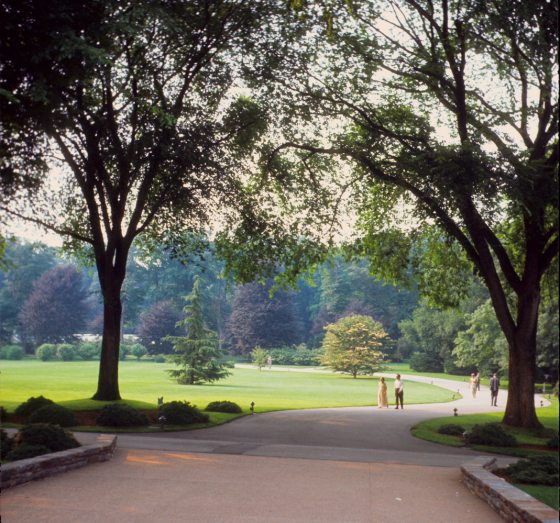
A view of two American elms outside the Visitor Center, 1967. Photo by Colvin Randall.
The walkway to the West as you exit the Visitor Center was once planted with elms on each side, creating a beautiful allee. Originally there were twelve trees lining the walkway, and all but one succumbed to Dutch elm disease (and possibly Elm Yellows). In an article written in 1986 for Longwood's staff magazine, the author states, “The remaining elm is the sole example of its kind left on Longwood property and it remains a magnificent specimen, though its prospects’ for the future are doubtful.” With a future that was once unsure, the tree still stands twenty-three years later. At the base of the tree you can see a large wound from a branch that tore down the trunk during a summer storm in 1998. Since then, the arborists take care to prune the tree almost every year to help reduce weight on the larger branches. We prune in the winter months to avoid when the elm bark beetles are active. The Integrated Pest Management crew here at Longwood Gardens takes preventative measures by doing soil injections every other year for elm scale and leaf hoppers, and monitoring for signs of Dutch elm disease. Dutch elm disease is a fungus that gums up the xylem cells, blocking the upward movement of water and nutrients into infected tree branches. Since the water and nutrients are essentially turned off, the leaves start to wilt and the branch eventually dies. Over time the entire tree will die if it’s not treated. The carrier of the disease is the European and native elm bark beetle. Humans can also spread the disease by transporting infected wood to different areas for logging or firewood. The next time you visit the Gardens, I hope you take a moment to stop and stand in the shade of this elegant and beautiful tree.
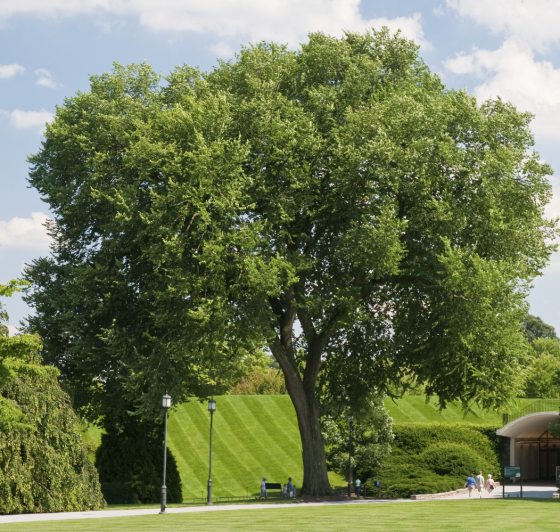
The remaining American elm at Longwood Gardens, 2012. Photo by Larry Albee.
